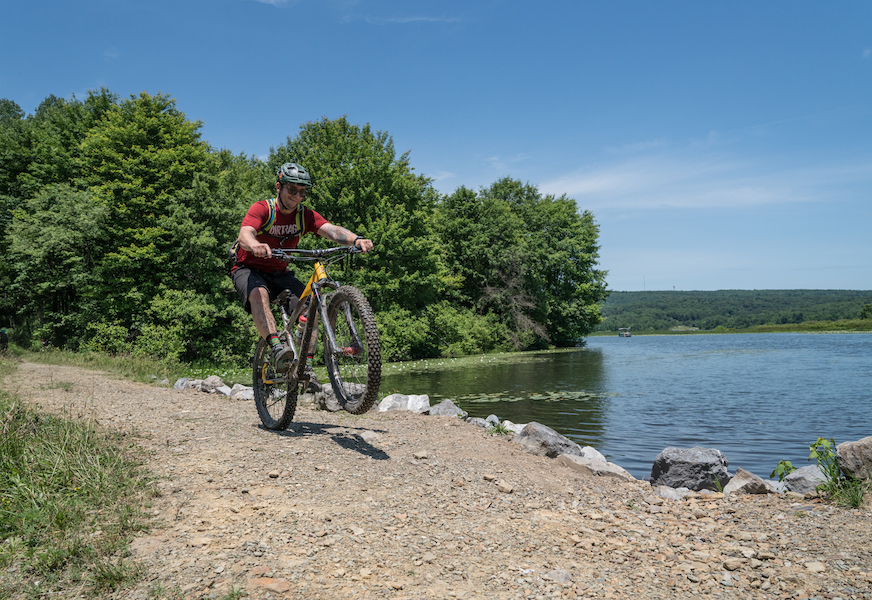Underground Bike Works Revival 27.5 Plus
Originally posted on January 11, 2019 at 4:20 amEditors note: This review originally appeared in Issue #206.
Tester: Stephen Haynes
Age: 40
Height: 6’0”
Weight: 210 lbs.
Inseam: 30 in.
Price: $6,950
Sizes: S, M, L (tested), XL
Online: undergroundbikeworks.com
Reach: 17.5”
Stack: 24.2”
Top Tube: 25.2”
Head Tube: 67.5°
Seat Tube: 72.5°
BB Height: 12”
Chainstays: 17.1”
Weight: 24lbs. w/o pedals, specs based on size tested
Before we begin, the briefest of histories for those unfamiliar with John Parker. While many know the storied history of the 1980s Marin mountain bike scene and the giants of our sport who were birthed from its bountiful womb, many (myself included if I’m honest) are unfamiliar with a similar phenomenon that was happening in the southern part of the state around the same time. While the NorCal folks came with a road racing pedigree, the SoCal crew, John Parker included, were more involved with BMX, hot rods and motorcycles.

Parker, having served time for childhood indiscretions, came out of institutional living with welding/fabricating knowledge and a yearning to put it to use. He went to work plying his craft as a set designer and prop fabricator in the movie industry and was all set for a career doing so until an incident with a race car left him immobile for several days.
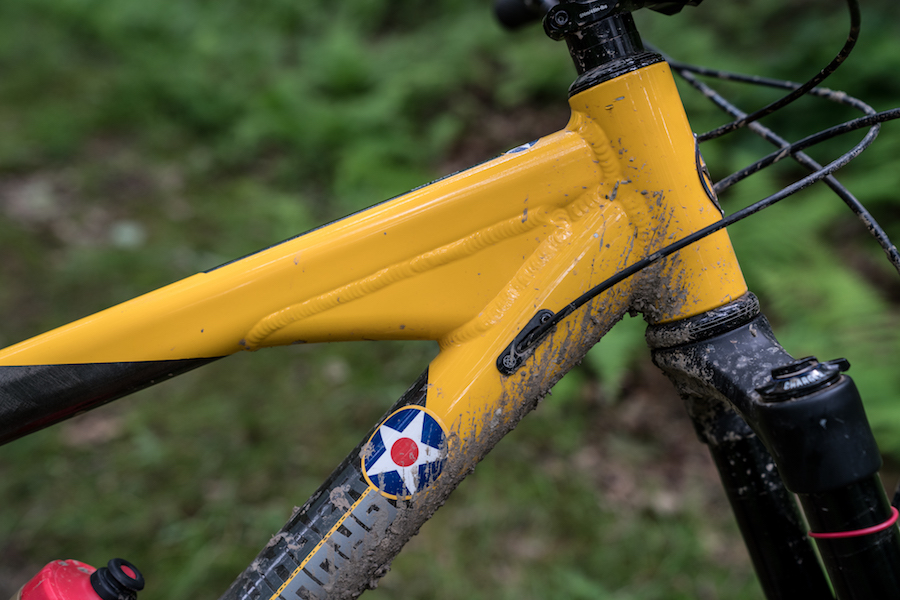
Pausing to take stock of his life with the unexpected free time, Parker decided to get back to working with bicycles as soon as he was able. He worked for Scot Breithaupt from SE Racing, building tables and shelves, then went on to buy welding machines and fixtures from Bob Wilson of the Sweetheart Cycles Moto Cruiser.
With the welding/fabricating knowledge and the gear to make it happen, John Parker, together with Chris Herting and Frank Wadleton, went on to found Yeti mountain bikes, drawing legendary racers Missy Giove, Juli Furtado, Myles Rockwell, Jimmy Deaton and John Tomac to their cause.
Eventually, the company grew beyond Parker’s original vision, and he cut bait on the enterprise, going back to the security of prop and set fabrication in Hollywood, visions of creating mountain bikes on hold for the foreseeable future.

With a healthy union gig and the diversions of both a sprint car racing team and flat track moto team, Parker wasn’t looking to pivot back toward bicycles, until he saw a guy on a fatbike … In the intervening years since stepping away from Yeti, bicycles developed and accepted all manner of wheels sizes beyond what was the standard 26 inch, and for the first time in a long time, Parker started to think about bikes again.
Armed with this new knowledge and interest, John began working with engineer Rich Adams to create a hardtail trail bike, incorporating modern geometry, bike wheels and his iconic loop tail, reminiscent of the 1995 Yeti ARC. And so Underground Bike Works and its first bike, the Revival, was born.
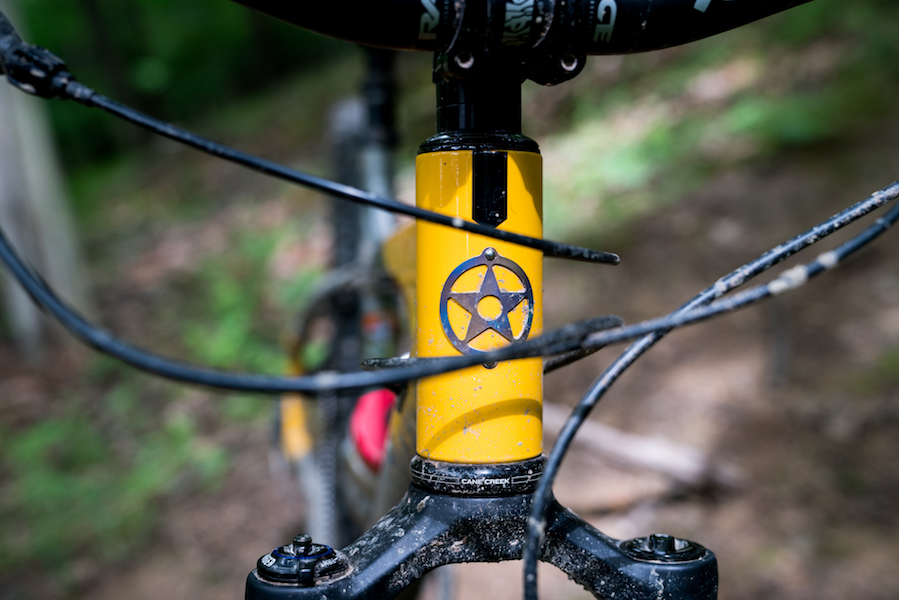
The Bike
The first thing you need to know about the Revival is that it’s not based on the typical model for manufacturing bicycles. In fact, forget what you know about manufacturing bicycles. Instead of sourcing the cheapest materials and components that clear the broadest profit margin, the folks at UBW wanted to produce super-high-quality bikes with a low production number.
Think about it this way. Let’s say the artist Shepard Fairey (Obey Giant, Obama “Hope” poster) creates a new design and decides to make a limited number of hand embellished, screen printed posters of that design. He decides to print 100 total, each signed and numbered to ensure the limited edition and value of the run. He could, theoretically, have an open edition, meaning he continues printing ad infinitum, making each subsequent print a little less valuable than the last. A little less collectible. The price is based on the desirability of the design, sure, but also on the history of the artist.

Now let’s apply this to John Parker, the UBW team and the Revival. Much like Shepard Fairey only making 100 prints of his new poster in our hypothetical scenario, Parker and his crew are only making a limited number of these bikes in this form. Only 250 to be exact. Each with its own serial number to ensure authenticity. And collectibility.
OK, have I made the case for limited edition? Good, moving on to build and spec. The Revival’s aluminum frame is welded by mountain bike industry veteran Frank Wadleton (aka Frank The Welder) in Vermont and is then sent to Durango, Colorado, where it is hand assembled with a thoughtfully chosen set of parts, by a small number of humans. These humans are mountain bikers all and are paid decent wages and given health benefits.

Everything on this bike is top of the range: SRAM Eagle 12-speed drivetrain, RockShox Pike 130 mm fork, Magura MT2 Trail Carbon brakes, HED carbon rims over I9 Torch hubs, FOX Transfer dropper and carbon bits and bobs for good measure. The parts alone are (nearly) worth the price of admission.
Before I forget, the paint job, designed by Matt Karaus and applied by Carl Schlemowitz
of Vicious Cycles, takes cues from the legendary P-51 Mustang open prop fighter plane from World War II. Each part of the paint scheme and decal work evokes the spirit of those planes. The same yellow used on the fighter punctuates the headtube and streaks out at angles over the top and down tube. The flat black that fades to raw, hand-sanded aluminum recalls the exhaust lines that would grace the sides of the aircraft. The black and white stripes and UBW insignia break up the arrangement and add little details to make the viewer dig deeper. The only thing missing are a few battle scars, which are left up to the rider.

The Ride
Now that we’ve established that the Revival is a super-well-specced, modern trail bike cum collectible art item, we have to ask, how does it ride? The short answer is: superbly.
I’ve ridden a lot of plus-sized bikes. To the point where riding anything with a sub 2.5-inch tire on the front end makes whatever I’m riding feel fragile. Anyway, most of the plus-sized rigs I’ve ridden, ride relatively well (say that five times fast), and while they’re all fun, only a few have had me wishing I had more legs to keep the ride going. And of those, only one feels like both a plaything and steadfast companion. The Revival is that bike and is one of the best plus sized bikes I’ve ever ridden.
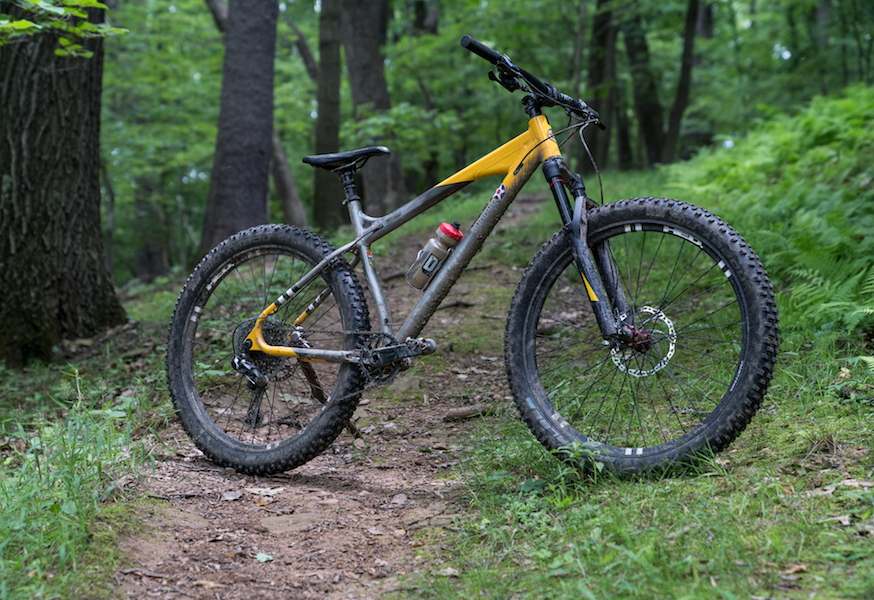
Why? It’s hard to put a finger on exactly. It climbs well, descends like a demon, goes where you want it too without feeling it’s being stressed (some would call that “compliant”) and is damn solid. The parts build is exemplary and performs brilliantly, so there isn’t much to talk about there. I could tell you the top of the line SRAM 12-speed drivetrain goes through the motions of gear changes like a warm knife through so much butter, or that the I9 Hubs wrapped in HED carbon rims are as rigid and loving as a Catholic nun, but all that would be gratuitous.
Point being, I’ve not yet found a set of conditions in which this bike didn’t perform above expectations. Maybe the price has something to do with it? Maybe knowing that a small group of American hands went into crafting the thing makes it feel better? I’m not a nationalist by the way, but knowing I could run into some of the folks who built this bike out on the trail is a pretty good feeling.
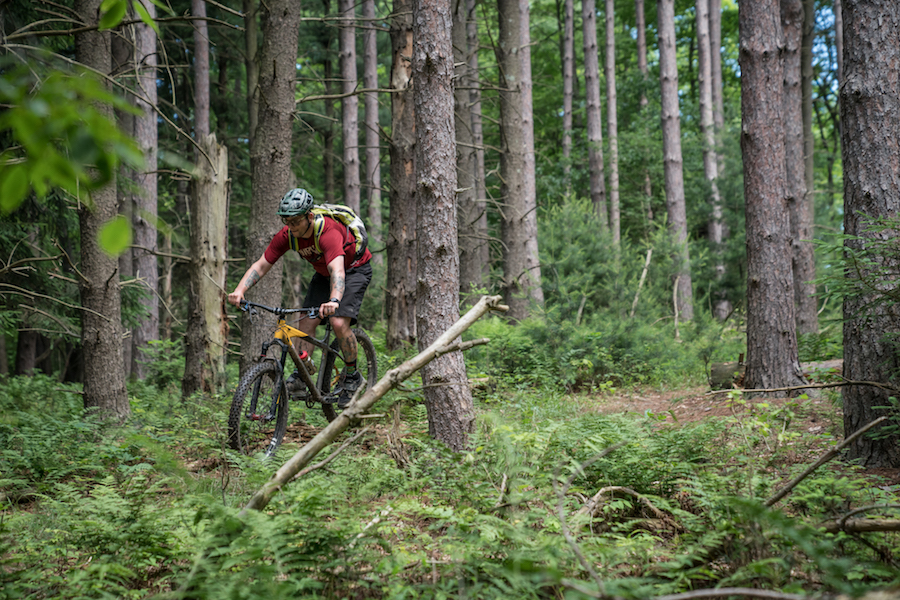
Conclusions
There are a few different ways to think about this bike: expensive showpiece, or exceptional hardtail trail bike. Either way, the nearly $7,000 price tag will put a lot of people off, and that’s OK. I’m sure there are enough appreciators of Mountain Bike Hall of Famer, John Parker (and his storied crew) who will gladly pony up for the opportunity to own one of these limited edition, hand-crafted beauties. And of the lucky folks who eventually do own one, a hefty percentage (I hope) will actually take the bike out and get it dirty.
